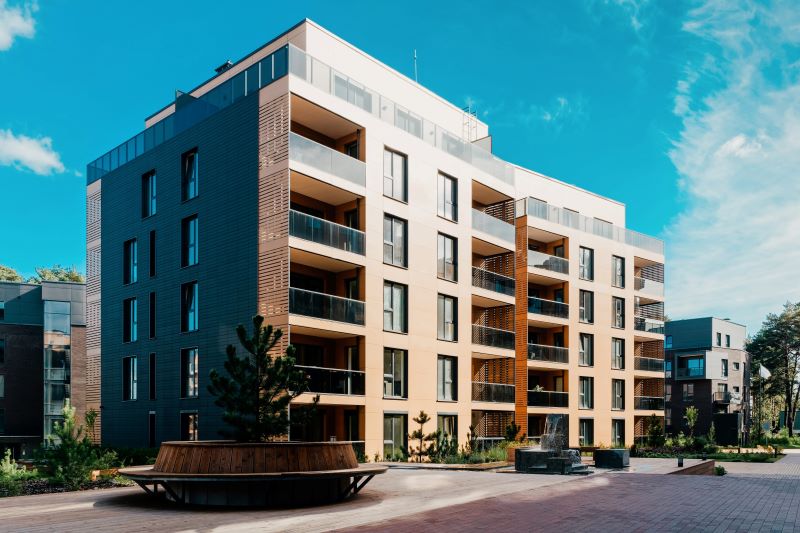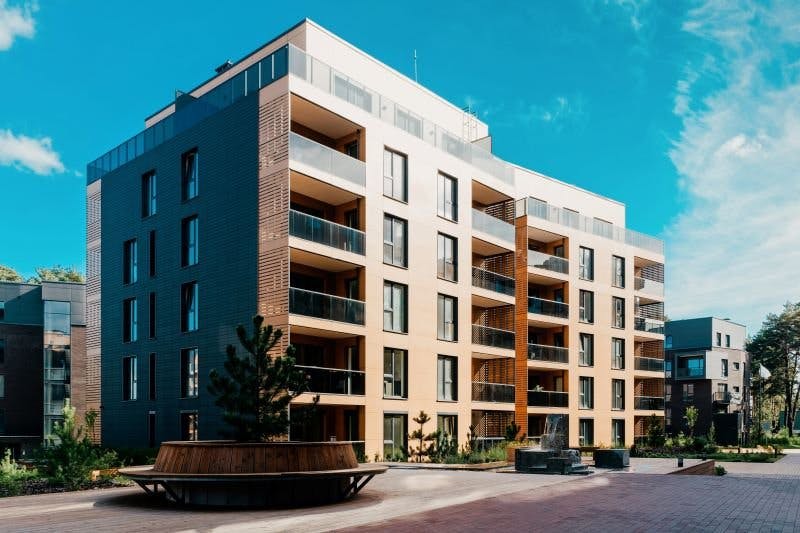Home


Resource Center
Competition in the real estate landscape is fierce. Whether you’re an owner or a property manager of a condominium, being at the top of your game involves close attention to basic amenities. These include air conditioning, trash removal and recycling, and reliable cell service.

There was a time when cell service was considered a luxury, just like on-site exercise facilities and grocery delivery options. That’s not the case anymore — for any of these things. In an age of pervasive 4G service, with 5G in the process of rolling out, the mobile device has become a necessity of life. A majority of Americans — 97% of them, in fact — own a cell phone, and 85% own a smartphone. Some 15% of Americans have a smartphone rather than home broadband as their primary access point for going online.
The mobile landscape has changed drastically. What hasn’t changed is that many buildings of all kinds, including condominium complexes, still suffer from poor signal and dead zones. As a manager or seller of a condo property, it’s important to have the best tools at your disposal to address these problems. That’s where a passive distributed antenna system, or passive DAS, can make all the difference.
What Is Passive DAS?

A passive distributed antenna system (DAS) is designed to capture and boost a weak cell phone signal. Passive DAS brings together components like coaxial cable, diplexers, amplifiers, and splitters with antennae that capture an outside mobile signal and antennae that distribute that signal throughout a given space.
Capable of boosting signals by up to 32 times, passive DAS has a number of advantages that make it ideal for deployment in condo complexes:
- It’s flexible. It can be installed zonally wherever you might need it, with antennae focused wherever you need to improve signal the most.
- It doesn’t require fiber optic installation or major hardware investments. When additional capacity is needed in a large-scale facility, the most common solution is active DAS, which is designed to cope with heavy traffic from tens of thousands of people. Active DAS distributes signal through fiber optic cable and a system of remote nodes, and it involves a large initial investment. Passive DAS can match the needs of a condo complex and is likely to be far less expensive.
- It’s carrier-agnostic. Other kinds of signal boosting technology often work with one specific carrier. By contrast, the kind of passive DAS that WilsonPro provides works on every network and with all U.S. carriers, including Verizon, AT&T, T-Mobile (recently merged with Sprint), and UScellular.
These advantages make passive DAS an excellent solution for providing the strongest possible signal for all your tenants without engaging in major construction or breaking the proverbial bank. It should allow them to enjoy fewer dropped calls, better voice quality, uninterrupted texts, faster data speeds, improved audio and video streaming, and greater hotspot capability.
What Kinds of Cell Signal Problems Does Passive DAS Address?

Several factors can lead to weak or intermittent cell signals. Some of the most common are:
- Building materials. Cell phone signals are just radio waves at the end of the day. Areas with a lot of metal, concrete, or low-E glass in a building’s construction can interfere with radio waves and considerably reduce the signal’s strength.
- Urban density. Even if the construction materials used in your complex don’t present obstacles to your cell signal, the materials in surrounding buildings might, and very dense areas are often places where dead zones and weakened signal happen.
- Heavy network traffic. The overall strain on your carrier’s network can ramp up in busy times — such as during major gatherings, festivals, or in the wake of less happy occasions like large-scale natural disasters. Heavy traffic can throttle the overall strength of your cell signal.
- Distance from the nearest cell tower. Although 4G mobile cell signal has substantial range, you may still find that condos in rural communities have less access to a quality signal than you might like. Because 5G networks use higher frequencies and shorter radio wavelengths to deliver their extreme speed, being remote from your nearest 5G signal infrastructure can significantly limit your connectivity.
All of these are common challenges for cell signals that a passive DAS can address. Basically, in any situation where you can capture a cell signal of any strength, passive DAS can compensate for obstacles and boost your signal’s quality to true effectiveness.
How Can You Get the Best Passive DAS for Your Condo’s Dead Zones?

When you’re looking at implementing passive DAS to compensate for dead zones in your condominium complex, the technical expertise that goes into customizing your solution is just as important as the technology itself.
WilsonPro partners have key advantages in delivering the best possible technical results and customer service:
- They have access to in-depth training programs with certified technology. This includes the ability to train at WilsonPro’s dedicated facility for that purpose. When you work with a WilsonPro Integrator, you can be confident that you’re working with knowledgeable people who can deliver real results.
- They provide the highest quality equipment. WilsonPro’s partners work with the top-selling standard for in-building signal boosters and can be relied upon to meet your installation needs.
This background of technical expertise, leading-edge technology, and training has built a dependable reputation for WilsonPro in delivering high-quality cell phone service in even the most difficult of situations. Numerous brands in multiple industry verticals have relied on WilsonPro passive DAS systems to render their mobile technology fully functional. Passive DAS provides staff, clients, and tenants alike with the reliable signal they need to keep pace with modern online life.
One illustrative example is a luxury residential building built to appeal to tech savvy tenants but constructed with a large amount of low-E energy-efficient glass. Interference from that material led to residents suffering from unreliable cell service and provided a great practical example of how passive DAS resolves these kinds of challenges.
Contact WilsonPro Today and Enjoy Better Condo Cell Phone Service

The friendly professionals at WilsonPro are always happy to talk with you, learn about the specifics of your property’s situation, and devise the best possible custom DAS solution for you. Keep your tenants happy and bring more prospects in with a cell signal that reliably provides access to the best of the modern internet, keeping people in touch with loved ones and informed about key work obligations.
Contact WilsonPro to address weak signal and dead zones in your condo today.

